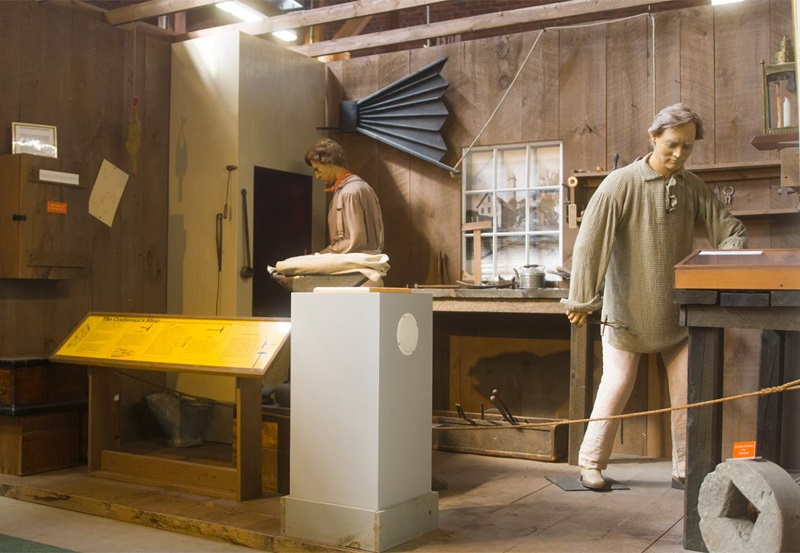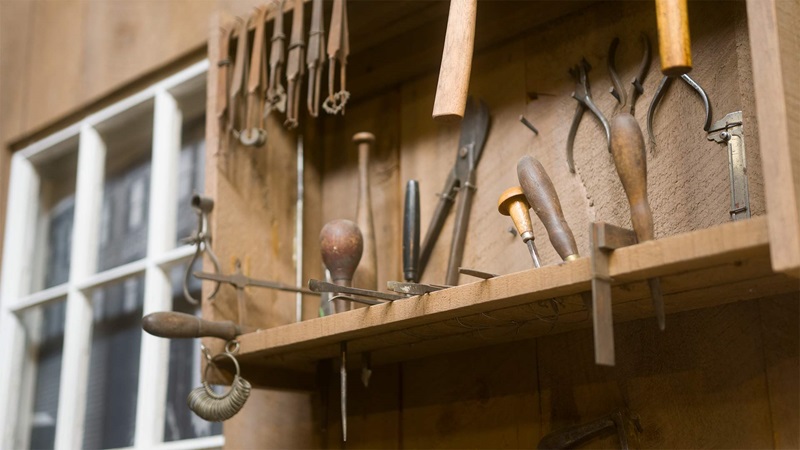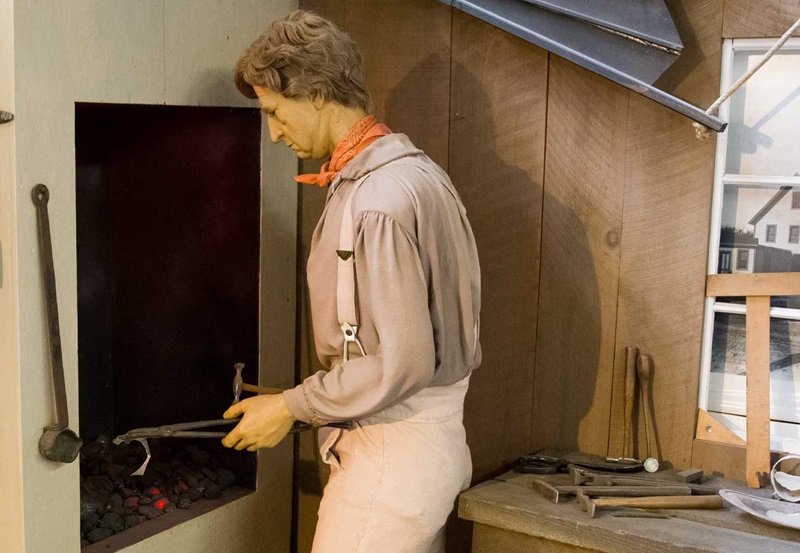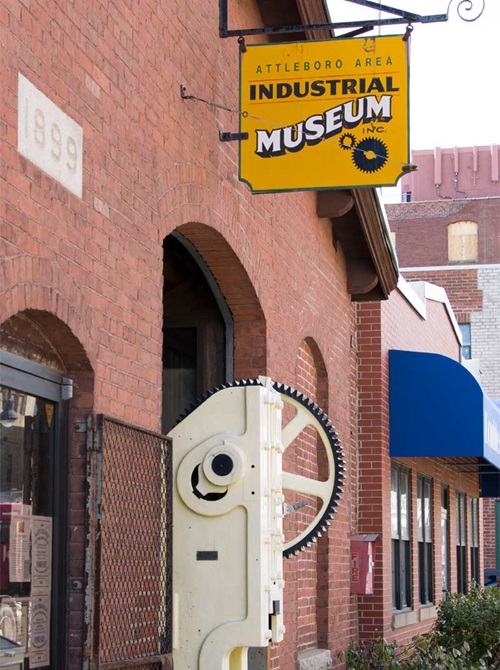19TH CENTURY CRAFTSMANSHIP

Step back in time to our craftsman’s shop, which has many of the same features you could find in a silversmith’s workshop before the Civil War. Take a moment to imagine the silversmith hard at work—molding pieces in the forge and using hammers and anvils to shape their silver into into things like cups and bowls.

Craftsman shops were often part of a family home and members of the family usually helped with the work. Apprentices would often live with the family while they learned the craftsman’s skill.
To keep metal malleable or workable under the stress of repeated hammer blows, the silversmith frequently reheated his pieces in the forge. For larger objects, silversmiths would use a crucible and create cast molds to help with making each part of the finished product. Silversmiths also used a pair of shears to cut out pieces of sheer silver that were soldered with the help of a blow pipe and soldering lamp.

While we all associate the forge as core to the silversmith’s work, keep in mind that craftsmen had to wear many hats in the pre-industrial period. Designing, making, selling, and managing were all necessary skills for a successful craftsperson during this time.
As an example, silversmiths in the pre-industrial period often worked in exchange for goods instead of money. Keeping careful accounts was therefore especially important to judge the success of their business.

They’d also make sure to keep an attractive display in the shop window, which along with newspaper advertising, would help bring in new customers.
